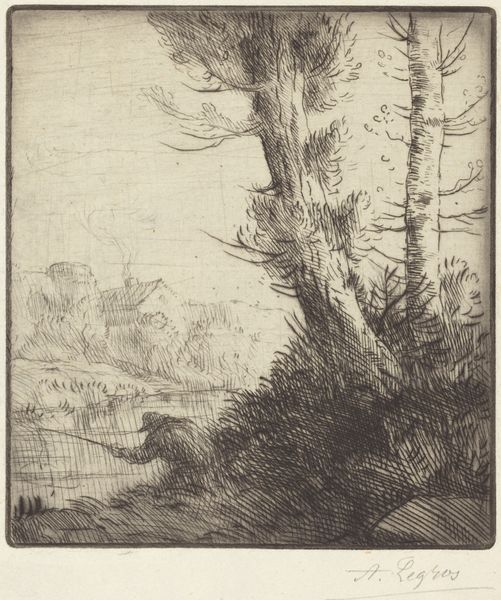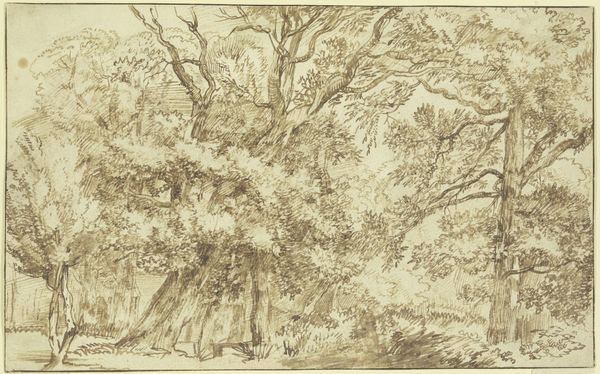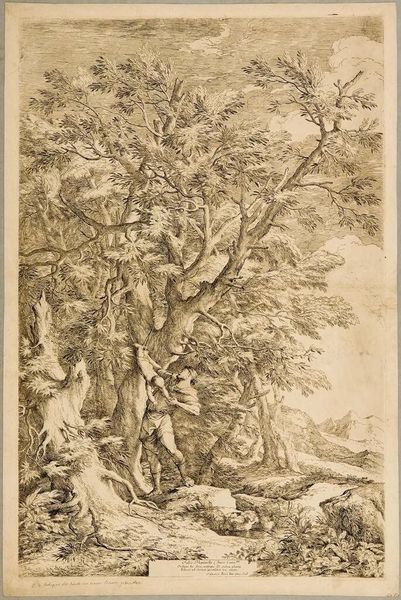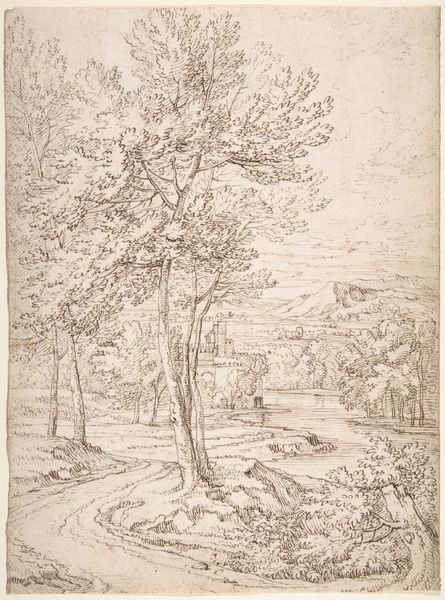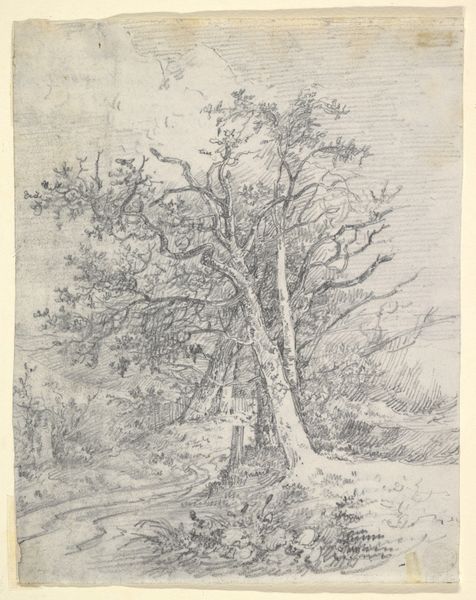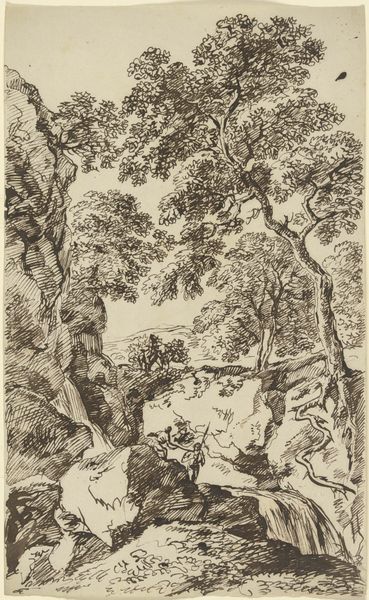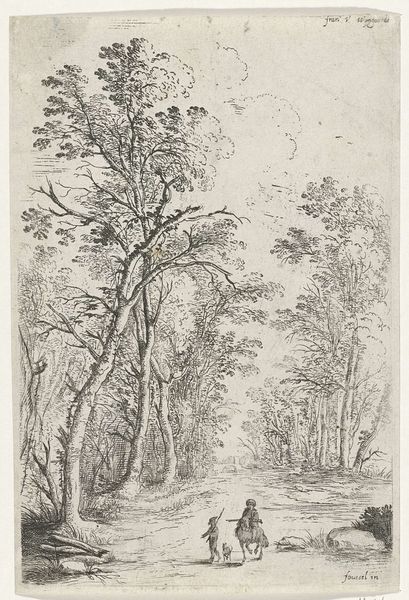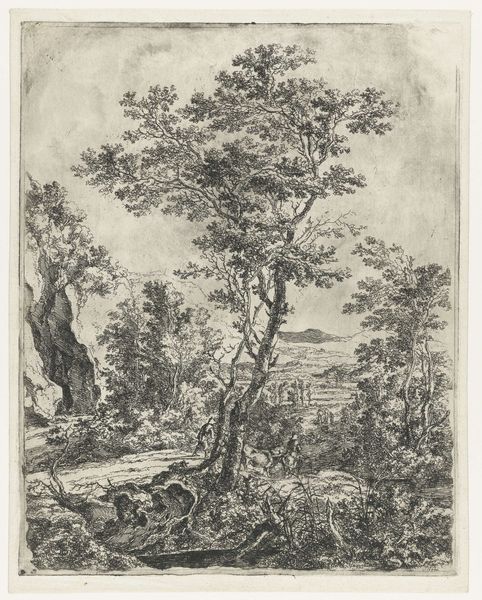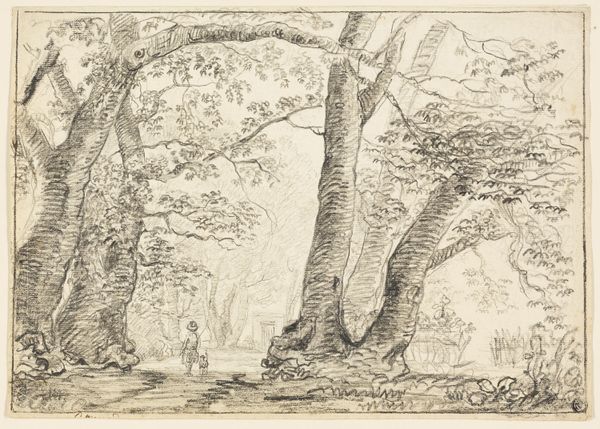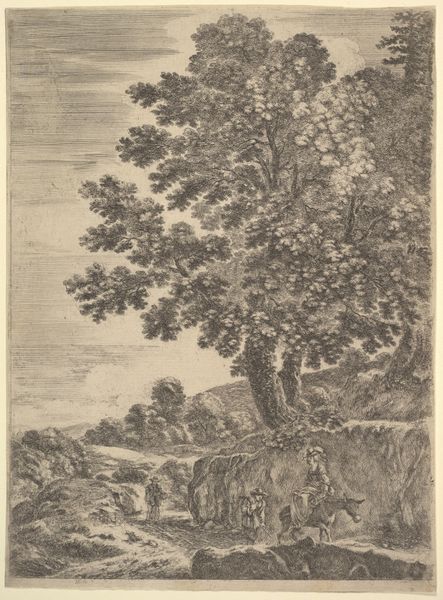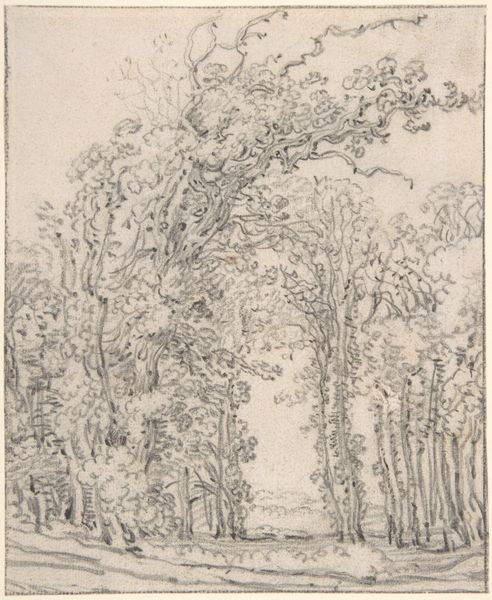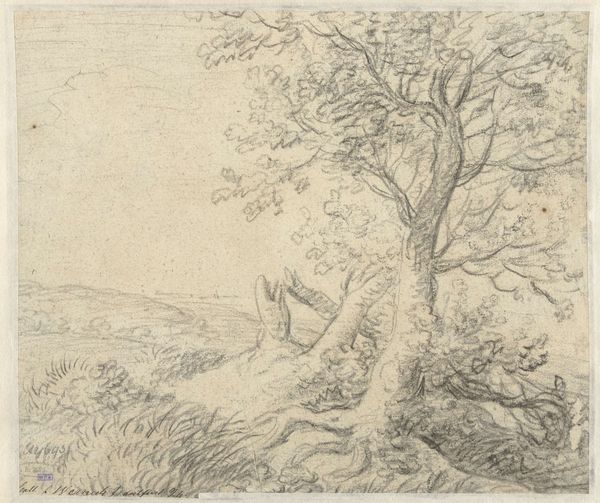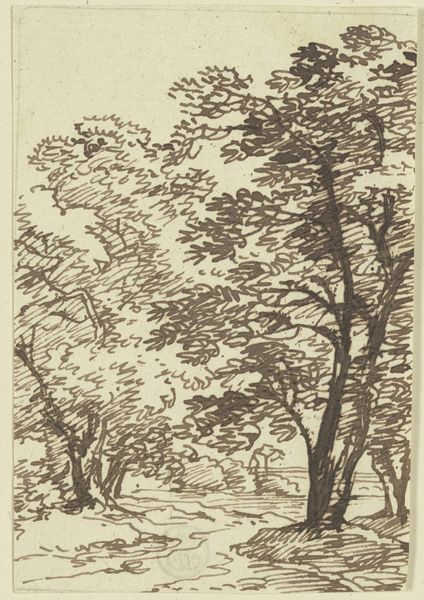
print, etching
# print
#
etching
#
landscape
#
line
#
realism
Copyright: National Gallery of Art: CC0 1.0
Curator: Cornelis Botke created "Beside a Valley Road" in 1942, employing etching to capture a rural scene. The detail achieved in this print is truly remarkable. Editor: The texture is what strikes me first. The way the light plays on the bark of the dominating tree, juxtaposed with the softness of the distant hills... it evokes a sense of tranquility. Curator: Let’s consider the technical aspects. As a printmaker, Botke would have carefully prepared the metal plate, incising the image with meticulous precision. Each line contributes to the overall composition, from the gnarled branches to the subtle shading of the landscape. How do you see this precise line work influencing the feel of the piece? Editor: Those lines definitely lend to an almost mythological aura to the landscape. Look at how the tree’s branches reach, like supplicating arms. The composition also directs the eye down the road, to the barely visible structures in the distance. Almost like the path of life, leading to shelter and the unknown. Curator: Interesting interpretation. Focusing on material culture of the period, paper rationing and constraints on material during wartime were affecting all artists and production during that era. It must have concentrated the focus of many artists to use minimal resources for maximum creative expression. Editor: Wartime definitely provides an added symbolic weight. It is almost as if Botke is invoking a simpler time, an archetypal past that is a haven against present anxiety and turmoil. The farmhouse, the gently rolling hills... it’s an idyllic escape. Curator: So the imagery feeds that escapism? And the relative scarcity of the medium made such prints even more precious at the time, acting almost as talismans of hope? Editor: Exactly. The symbols are there, rooted in something deep. This work reminds me that the role of a symbol shifts in relevance depending on time and social context. Curator: So by exploring both the materiality and the symbolism, we are able to achieve a more nuanced view into its past, as well as enrich our engagement with it today. Editor: Indeed. By allowing art to speak across eras we learn about it and ourselves.
Comments
No comments
Be the first to comment and join the conversation on the ultimate creative platform.
